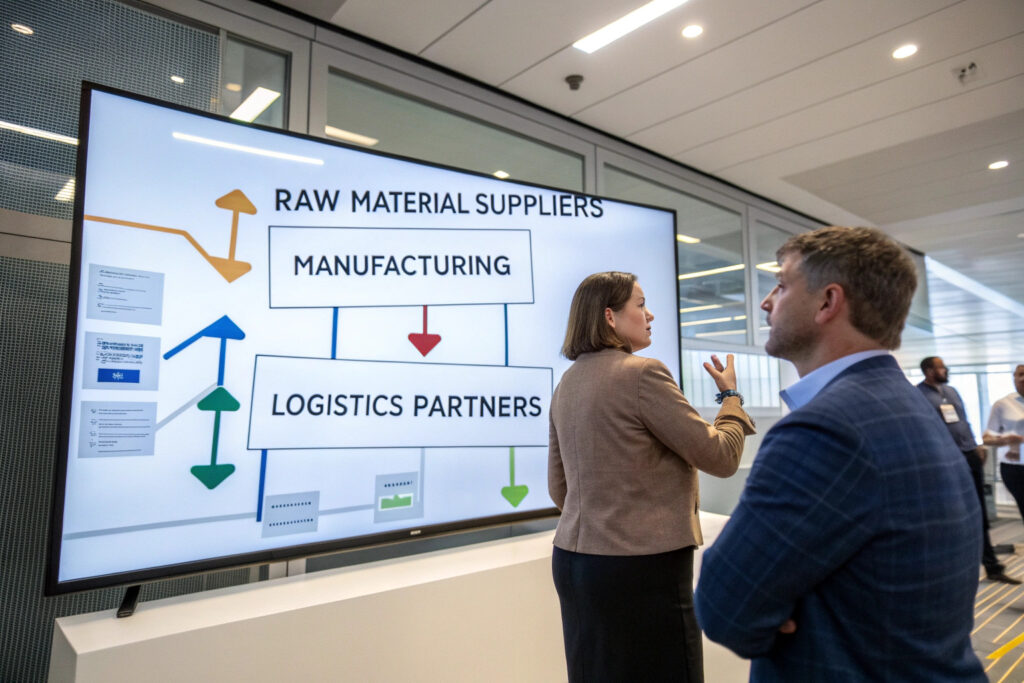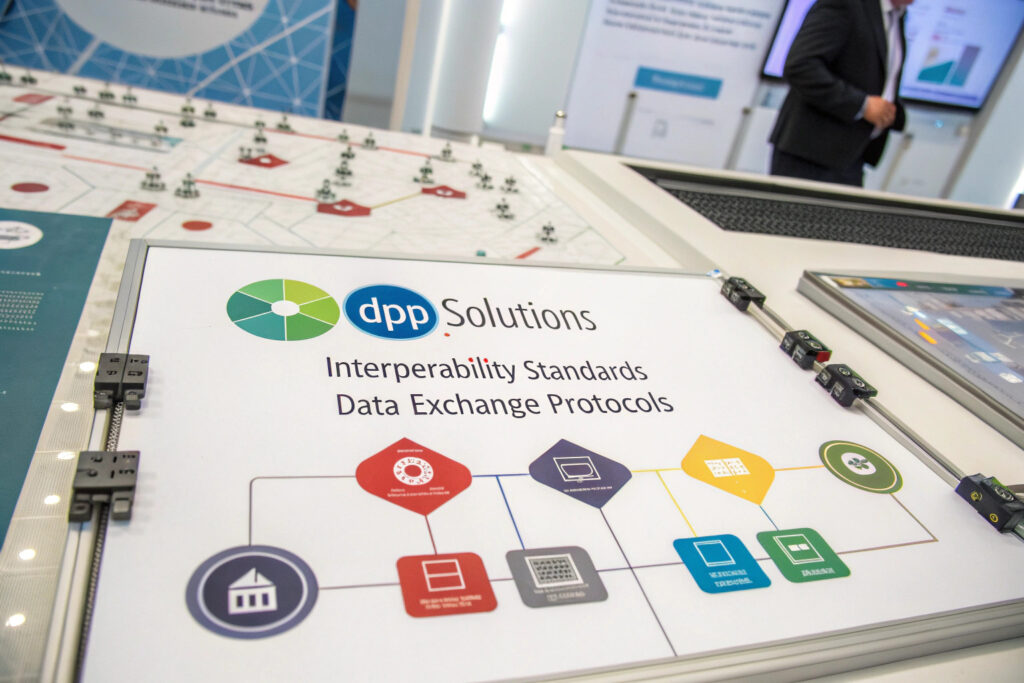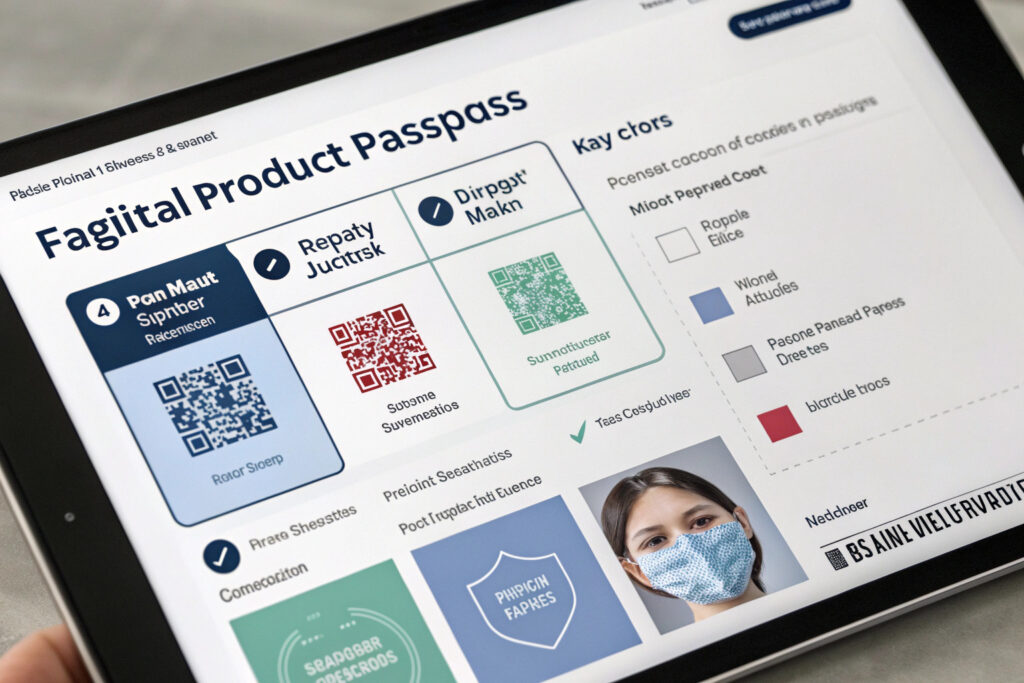Digital Product Passports (DPPs) are emerging as the gold standard for supply chain transparency, particularly in the textile industry where consumers and regulators increasingly demand verifiable information about product origins, materials, and environmental impact. For fabric masks, DPPs provide an immutable record from raw material sourcing through manufacturing to end-of-life options, creating unprecedented visibility into product journeys.
To access Digital Product Passports for end-to-end mask traceability, manufacturers must implement unique product identification, establish data capture throughout their supply chain, select appropriate DPP platforms, and ensure interoperability between different systems. The process involves both technical implementation and strategic partnerships to create comprehensive digital twins of physical mask products.
The European Union's forthcoming Digital Product Passport regulation under the Ecodesign for Sustainable Products Regulation (ESPR) is accelerating DPP adoption, making early implementation a competitive advantage. Beyond compliance, DPPs create business value through enhanced consumer trust, streamlined certification, and improved supply chain management. Let's examine the practical steps to access and implement this transformative technology.
What Technical Infrastructure Is Required for DPP Implementation?
Establishing the foundation for Digital Product Passports requires specific technical components and data systems.

How are unique product identifiers implemented?
Serialized QR codes, NFC tags, or RFID chips create digital twins for physical mask products, typically at the batch or individual item level. These identifiers serve as access points to comprehensive product data stored in secure databases. For mask applications, we recommend QR codes for cost-effectiveness and universal accessibility, with batch-level tracking for standard products and item-level for premium lines. Our implementation uses GS1-standard digital links that encode both batch information and direct access URLs.
What data architecture supports DPP systems?
Structured data templates following emerging standards like the European DPP requirements ensure consistency and interoperability. Essential data categories for masks include: material composition and sourcing, manufacturing processes and locations, environmental footprint (LCAs), certifications and test reports, care instructions, and end-of-life options. Our data architecture organizes information into mandatory regulatory fields and optional brand storytelling elements.
How Do You Capture Supply Chain Data for Mask DPPs?
Comprehensive DPPs require systematic data collection from multiple supply chain participants.

What supplier data is essential for mask traceability?
Verified material provenance forms the foundation of mask DPPs, including fiber origin (farm or recycled source), processing methods, dyeing chemicals, and transportation history. Our system requires suppliers to provide third-party verified documentation for key claims, such as GOTS certification for organic cotton or OEKO-TEX® verification for material safety. This creates an auditable chain of custody from the earliest production stages.
How is manufacturing data integrated?
Production process documentation captures critical information including manufacturing facility details, energy sources, water usage, worker certifications, and quality control results. Our connected factory systems automatically record production dates, batch numbers, and quality metrics directly to the DPP platform, eliminating manual data entry errors and creating real-time visibility.
What Platforms and Standards Govern DPP Access?
Navigating the evolving landscape of DPP platforms and standards ensures compatibility and future-proofing.

Which DPP platforms are leading in textiles?
Emerging specialized platforms including EON, TextileGenesis, and EZTex provide tailored solutions for textile DPPs, while broader solutions like Avery Dennison's atma.io offer cross-industry capabilities. The selection depends on your specific needs: specialized platforms offer industry-specific templates while broader solutions provide wider interoperability. Our hybrid approach uses TextileGenesis for material traceability integrated with custom blockchain solutions for manufacturing data.
How do interoperability standards work?
Emerging protocols like the EU's DPP requirements and industry initiatives from organizations like GS1 ensure different systems can communicate effectively. The key is implementing open standards rather than proprietary solutions that create vendor lock-in. Our DPP implementation follows the CIRPASS framework recommendations, positioning us for compliance with forthcoming EU regulations while maintaining flexibility.
What Are the Implementation Steps for Mask Manufacturers?
A phased approach to DPP implementation manages complexity while delivering incremental value.

What does a practical implementation timeline look like?
Phased rollout typically begins with a 3-6 month pilot focusing on your most transparent supply chain relationships, then expands to full implementation over 12-18 months. Our recommended approach starts with basic material traceability, adds manufacturing data in phase two, then incorporates environmental and social metrics in phase three. This delivers early wins while building toward comprehensive DPPs.
How much does DPP implementation cost?
Implementation costs vary significantly based on supply chain complexity and existing digital infrastructure. Basic DPP implementation for a mask manufacturer typically ranges from $25,000-$75,000 initially, with ongoing costs of $0.05-$0.15 per product for platform fees and data management. Our analysis shows ROI typically occurs within 24-30 months through premium pricing, reduced compliance costs, and supply chain optimization.
How Do Consumers and Businesses Access DPP Information?
User-friendly access mechanisms make DPP data valuable rather than merely compliant.

What consumer access methods work best?
QR code scanning provides immediate access to DPP information using smartphones, with responsive web design ensuring accessibility across devices. The interface should offer tiered information—basic details for quick scanning, with drill-down capabilities for interested consumers. Our consumer DPP interface uses progressive disclosure that starts with simple sustainability metrics and allows exploration of detailed supply chain data.
How do business partners access DPP data?
API integrations and platform logins provide business partners with more comprehensive data access, including detailed certifications, test reports, and supply chain analytics. Different permission levels ensure partners see relevant information while protecting proprietary data. Our B2B DPP portal has reduced customer qualification time by 65% by providing immediate access to all required documentation.
What Business Value Do DPPs Create Beyond Compliance?
Understanding the strategic advantages helps justify DPP investments and guides implementation priorities.

How do DPPs support premium positioning?
Verified sustainability claims enabled by DPPs typically support 15-30% price premiums while reducing "greenwashing" accusations. Our clients using comprehensive DPPs have achieved 22% average price increases for masks with complete traceability compared to similar products without verified claims. The transparency creates compelling brand stories that resonate with environmentally conscious consumers.
What operational efficiencies do DPPs create?
Streamlined compliance and certification reduces administrative burdens significantly. Rather than maintaining separate documentation for various certifications and customer requests, manufacturers can provide authorized access to relevant DPP sections. This has reduced our audit preparation time by 70% and decreased time spent responding to customer information requests by 85%.
Conclusion
Accessing and implementing Digital Product Passports for end-to-end mask traceability requires strategic planning, appropriate technology selection, and systematic data collection throughout the supply chain. While the implementation requires significant effort, the benefits extend far beyond compliance to include enhanced consumer trust, operational efficiencies, premium pricing capability, and future-proofing against evolving regulatory requirements.
The most successful DPP implementations start with clear objectives, focus initially on the most valuable transparency claims, and build toward comprehensive traceability through phased implementation. As DPPs become industry standard, early adopters gain significant competitive advantages while positioning themselves as transparency leaders.
Ready to explore Digital Product Passport implementation for your mask products? Contact our Business Director, Elaine, at elaine@fumaoclothing.com to discuss our DPP expertise and how we can help you build verifiable supply chain transparency that creates business value while ensuring regulatory compliance. We'll provide a customized assessment of your DPP readiness and implementation roadmap.


























